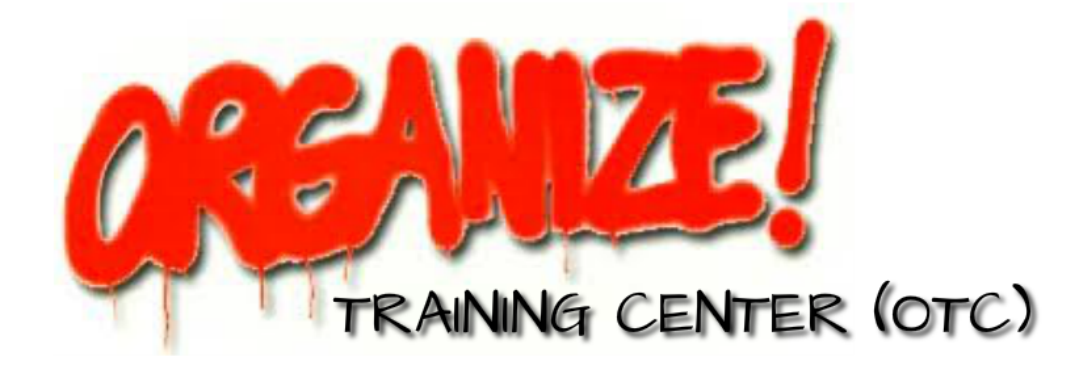|
In the recent (5/16/17) Los Angeles Unified School District—second largest district in the nation—Board election, pro-private charter/voucher candidates defeated the incumbent school board president and a candidate who shares his basic views. Some $14 million was spent, most of it by the winners—which will no doubt be the reason given by many for their victory. I think it is more complicated than that.
Here is a framework for understanding the Los Angeles school board election (a framework that I think is also applicable to Trump’s victory and other electoral results with which most readers of these comments are not pleased). The framework has three parts: (1) the crippled programs syndrome; (2) the erosion of civil society, and; (3) the failure of organized labor to be much more than another interest group, and of broadly-based, multi-issue, community organizing to reach what I think is its potential. 1. The crippled programs syndrome I wish I could claim this appellation as my own, but it comes from a paper with that title written in the early 1970s by Steven Waldhorn (a long-time friend of mine) when he was at Stanford University. The paper’s essential argument is that government programs for the poor are often inadequate because of crippling legislative, guideline and appropriations constraints imposed upon them at the outset by conservative legislators and administrators. Having crippled them, these conservatives then widely trumpet the failures of government programs. Inner-city schools are among the crippled programs. (Imagine the difference in outcomes if teacher salaries were doubled, classroom size halved, breakfast and lunch provided for all students, and program monies were abundantly available for things like the Algebra Project.) 2. The erosion of civil society This subject is at the core of what I do and think. We cannot have a vital democracy without vital, voluntary associations, democratically constituted and funded by their members. It is these groups that are the underpinning of democratic politics. Without them, politicians are dependent upon media to reach voters, and media costs lots of money which, as few would deny, makes those politicians increasingly dependent upon those who fund their campaigns. Without these associations there is nothing standing between individuals and families, on the one hand, and, on the other, mega-institutions like large corporations, government and large nonprofits (as in the health-care system). In the absence of these “mediating institutions”, everyday people are disconnected from civic life as citizens. Instead, they are “recipients” or “beneficiaries” of programs about which they have little voice. Their voicelessness makes them prey to demagogues who exploit it and promise to stand for “the people” against the mega-institutions that dominate society. (Note that this framework excludes from civil society the typical nonprofit which—whatever its merits, and they are often many—is part of the problem, not the solution. In the low- and moderate-income communities in which I worked during the years of the poverty program, model cities, and a number of other federal programs aimed at alleviating poverty, there emerged a plethora of “community-based non-profits”. In general, the purpose of each was good. And many of them did a good-to-excellent job implementing that purpose; others were simply part of a patronage machine. Whether excellent or worthless, their cumulative effect was to erode voluntary civic associations which had a “bottom-up” character and substitute for them the particular structure and character of most nonprofits: self-perpetuating boards of directors, no or non-voting membership, total dependency on external funding—all of which resulted in no participation and no community accountability.) Cumulatively, they are an example of the sum being less than its parts. 3. The labor “movement” and broadly-based community organizing When I was a boy, my parents did not miss voting in elections. Their guide to how they cast their ballot was the west coast longshoremen’s union slate card. The International Longshoremen’s & Warehousemen’s Union (ILWU) was a Communist-influenced/left-wing union; it was expelled from the CIO during the post World War II red-scare period. My folks were part of that left-wing world. Even though not members of ILWU, they trusted it. They had personal relationships with members and leaders in it. They were part of a vibrant community in which politics was regularly discussed, social gatherings took place, educational activities were numerous, and action for social and economic justice was central. My parents voted for those slate card-recommended politicians no matter how much campaign money was spent by their opposition. That ILWU was part of the John L. Lewis-led Congress of Industrial Organizations (CIO), and the CIO of the 1930s was part of a broad “progressive” movement that spoke for the common good and general welfare. Whatever its weaknesses, and they were surely there, these unions cared about more than the narrow, though important, workplace interests of their members. When Saul Alinsky organized Back of the Yards Neighborhood Council (BYNC), one of its principal activities was to support a strike of the Packinghouse Workers Organizing Committee (PWOC). And BYNC, whose members were for the most part eastern European “ethnics”, was an outspoken supporter of racial justice—for example, providing testimony for fair employment practices. Sad to say, most parents don’t see teacher unions as outspoken supporters for the education of their kids. And for good reason. If it were otherwise, the 25,000+ teachers (60,000+ total employees) in the LA School District would have been the base for a door-to-door/home visits/small house meetings face-to-face election campaign that would have convinced the number of voters needed to win: 31,000 for Zimmer, and 14,000 for Imelda Padilla (the union-supported, anti-voucher/private charter candidates). And nor would there have been a mere 11% (that’s not a typo!) voter turnout in the election. And that doesn’t even count unions with no direct relationship to public schools. The self-identified “labor movement” (which isn’t moving very much, and sometimes moves backward rather than forward) has become another “interest group”. Its word doesn’t mean much to the general electorate, and in some cases not even to its own membership. Broadly-based community organizing in what might broadly be defined as “the Alinsky tradition” is now almost 80 years old. The current veterans in the field have been engaged in the work for 50+ years. I count myself among them. For reasons that are beyond the scope of what I want to say here, we have not reached the people power capacity, nor broadly expressed the vision, that characterized the CIO at its best. Without substantial change in these two arenas, the present situation in the country is likely to persist. Electoral victories by even the most “progressive” of candidates are not sufficient to turn the country around; they don’t have the power to combat things like capital strikes that are likely to follow any significant efforts at reform. The Result Combined, these three factors—crippled programs syndrome, erosion of civil society, and failures and weaknesses of organized labor and community organizing—create the circumstances in which “neo-liberalism” is now the dominant ideology of the country (and the western world). While I think it rests on shaky foundations, this point of view is the underpinning of shrinking government (except for the security-military industry complex), charter schools and vouchers, market solutions to all human problems, rugged individualism and a consumer culture. The results are the present vast inequalities of income and wealth, the largely unrestrained power of corporate and Wall Street America, and growing hostility toward “The Other,” whomever she or he may be. Fortunately, a majority of Americans do not agree with significant parts of this ideology, and they want something different from their politicians than they are getting. In poll after poll, voters express views that are far more consistent with a notion of the public welfare and common good, as well as unity in diversity, than they are with “watch out for number one” or any of the “isms”. So I do not despair. But there sure is a lot of organizing work to be done.
1 Comment
|
AuthorMike Miller has had almost 60 years experience as a community organizer. Before founding the ORGANIZE! Training Center in San Francisco in 1972, he was a founding member of SLATE and an SNCC field secretary. In 1967, he directed one of Saul Alinksy's community organizing projects. Archives
February 2018
Categories(The quote at the top of the
page is by Desmond Tutu.) |
(415) 648.6894 [email protected] 442 Vicksburg, San Francisco, CA 94114
Copyright© Since 2016, ORGANIZE! Training Center. All rights reserved.
Copyright© Since 2016, ORGANIZE! Training Center. All rights reserved.


 RSS Feed
RSS Feed